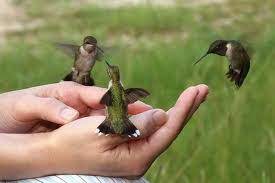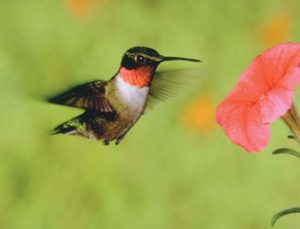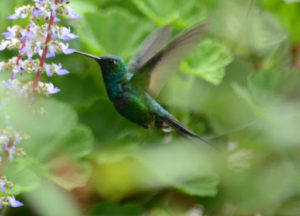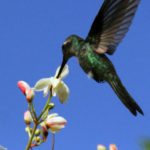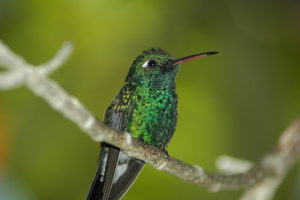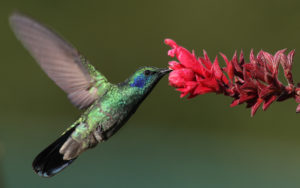CUBA, HABITAT OF THE WORLD SMALLEST BIRD, THE COLIBRÍ “ZUN-ZUNCITO”.VIDEOS
In the warm climate and abundant tropical vegetation of that ‘green alligator’-Cuba- is the only hummingbird species habitat of the “world’s smallest bird”, the Zun-Zuncito (The bee hummingbird, or Helena hummingbird Mellisuga helenae).
The bee hummingbird is endemic to the entire Cuban archipelago, including the main island of Cuba and the Isla de la Juventud in the West Indies. Its population is fragmented, found in Cuba’s mogote areas in Pinar del Rio province and more commonly in Zapata Swamp (Matanzas province) and in eastern Cuba, with reference localities in Alexander Humboldt National Park and Baitiquirí Ecological Reserve (Guantanamo province) and Gibara and Sierra Cristal (Holguin province)
http://youtu.be/MT0hFXblpaM
THE CUBAN ZUN-ZUN (VIDEOS)
This bird intensely active, spend more energy relative to its diminutive size than any warm-blooded animal.
The bee hummingbird is the smallest living bird. Females weigh 2.6 g (0.092 oz) and are 6.1 cm (2.4 in) long, and are slightly larger than males, which have an average weight of 1.95 g (0.069 oz) and length of 5.5 cm (2.2 in). Like all hummingbirds, it is a swift, strong flier.
The male has a green pileum and bright red throat, iridescent gorget with elongated lateral plumes, bluish upperparts, and the rest of the underparts mostly greyish white. Compared to other small hummingbirds, which often have a slender appearance, the bee hummingbird looks rounded and plump.
Female bee hummingbirds are bluish-green with a pale gray underside. The tips of their tail feathers have white spots. During the mating season, males have a reddish to pink head, chin, and throat. The female lays only two eggs at a time, each about the size of a coffee bean.
It is vibrating faster (about 60 flaps per second) and allows you to move at a speed of 80km/per hour in mating season runs nuptial at high altitudes, which require about 200 flaps per second.
The colorful plumage no is due to pigmentation, but the refraction of light, because their feathers have a prismatic configuration.
The species of smaller size is the bee hummingbird or bee elf (Mellisuga helenae), whose beak and tail is only about 5.5 inches, exclusive of Cuba, and was discovered by the German naturalist Juan Cristóbal Gundlach in the mid-nineteenth century.
DIET
The bee hummingbird has been reported to visit 10 plant species, nine of them native to Cuba. These flowers include Hamelia patens (Rubiaceae), Chrysobalanus icaco (Chrysobalanaceae), Pavonia paludicola (Malvaceae), Forsteronia corymbosa (Apocynaceae), Lysiloma latisiliquum (Mimosaceae), Turnera ulmifolia (Passifloraceae), Antigonon leptopus (Polygonaceae), Clerodendrum aculeatum (Verbenaceae), Tournefortia hirsutissima (Boraginaceae), and Cissus obovata (Vitaceae). They occasionally eat insects and spiders. On a typical day, bee hummingbirds will consume up to half their body weight in food.
The male is 63mm, ruby has feathers on his head, cheeks, and throat. When “saw” Wedding plumage (red or ruby on the upper body blue) looks on the forehead or cheeks, short feathers, and another long throat, which vibrate when you sing.
The female, greenish, lays eggs during May and June in a cup-shaped nest, built with lichens, fibers, and spider webs.
Known universally by hummingbirds, up the long family of “Trochilidae”, it represents about 300 species throughout the Americas, but the Bee Hummingbird, the smallest and arguably the most beautiful, is ours, is endemic to CUBA.
The brilliant, iridescent colors of the bee hummingbird’s feathers make the bird seem like a tiny jewel. The iridescence is not always noticeable but depends on the viewing angle. The bird’s slender, pointed bill is adapted for probing deep into flowers. The bee hummingbird feeds mainly on nectar, by moving its tongue rapidly in and out of its mouth. In the process of feeding, the bird picks up pollen on its bill and head. When it flies from flower to flower, it transfers the pollen. In this way, it plays an important role in plant reproduction. In one day, the bee hummingbird may visit 1,500 flowers.
BREEDING
The bee hummingbird’s breeding season is March–June. They lay up to two eggs at a time. Males in the “bee” hummingbird clade court females with sound from tail‐feathers, which flutter during display dives.
Using bits of cobwebs, bark, and lichen, the female builds a cup-shaped nest that is about 2.5 cm (0.98 in) in diameter. Nests have been built on single clothespins. She lines the nest with soft plant fibers and there she will lay her eggs. She alone incubates the eggs and raises the young.
The bee hummingbird prefers to build nests in adult, leafy Jucaro (Bucida buceras), and juvenile Ocuje (Calophyllum antillanum) but has been found in other trees. It has been observed that after completion of the nest the eggs are in incubation for 21 days followed by 2 days of hatching and 18 days of care by the mother. The last 4-5 days of care involve the juvenile hummingbirds practicing flight and end with the bee hummingbird leaving the nest to never return. The nests are only used once and then destroyed by rain and other natural forces.
CUBA, HABITAT DEL PÁJARO MÁS PEQUEÑO DEL MUNDO, EL COLIBRÍ “ZUN-ZUNCITO” .VIDEOS.
En el clima cálido y abundante vegetación tropical de ese ‘caimán verde’ -Cuba- se encuentra la única especie de colibrí hábitat del “pájaro más pequeño del mundo”, el Zun-Zuncito (El colibrí abeja, o colibrí Helena Mellisuga helenae).
El colibrí abeja es endémico de todo el archipiélago cubano, incluida la isla principal de Cuba y la Isla de la Juventud en las Indias Occidentales. Su población está fragmentada, se encuentra en las zonas de mogotes de Cuba en la provincia de Pinar del Río y más comúnmente en el Pantano de Zapata (provincia de Matanzas) y en el este de Cuba, con localidades de referencia en el Parque Nacional Alexander Humboldt y la Reserva Ecológica Baitiquirí (provincia de Guantánamo) y Gibara y Sierra. Cristal (provincia de Holguín)
http://youtu.be/-348UxJsW7Q
EL ZUN-ZUN CUBANO (VIDEOS)
Esta ave, intensamente activa, gasta más energía en relación con su diminuto tamaño que cualquier animal de sangre caliente.
El colibrí abeja es el ave viva más pequeña. Las hembras pesan 2,6 g (0,092 oz) y miden 6,1 cm (2,4 pulgadas) de largo, y son un poco más grandes que los machos, que tienen un peso promedio de 1,95 g (0,069 oz) y una longitud de 5,5 cm (2,2 pulgadas). Como todos los colibríes, es un volador rápido y fuerte.
El macho tiene un pileum verde y una garganta de color rojo brillante, un gorjal iridiscente con plumas laterales alargadas, la parte superior azulada y el resto de la parte inferior en su mayoría de color blanco grisáceo. En comparación con otros colibríes pequeños, que a menudo tienen una apariencia esbelta, el colibrí abeja parece redondeado y regordete.
Los colibríes abeja hembra son de color verde azulado con una parte inferior gris pálida. Las puntas de las plumas de la cola tienen manchas blancas. Durante la temporada de apareamiento, los machos tienen una cabeza, barbilla y garganta de color rojizo a rosado. La hembra pone solo dos huevos a la vez, cada uno del tamaño de un grano de café.
Vibra más rápido (alrededor de 60 flaps por segundo) y le permite moverse a una velocidad de 80km / por hora en las carreras nupciales en temporada de apareamiento a grandes altitudes, que requieren alrededor de 200 flaps por segundo.
El colorido plumaje no se debe a la pigmentación, sino a la refracción de la luz, porque sus plumas tienen una configuración prismática.
La especie de menor tamaño es el colibrí abeja o abeja duende (Mellisuga helenae), cuyo pico y cola mide apenas unos 5,5 centímetros, exclusivo de Cuba, y fue descubierto por el naturalista alemán Juan Cristóbal Gundlach a mediados del siglo XIX.
DIETA
Se ha informado que el colibrí abeja visita 10 especies de plantas, nueve de ellas nativas de Cuba. Estas flores incluyen Hamelia patens (Rubiaceae), Chrysobalanus icaco (Chrysobalanaceae), Pavonia paludicola (Malvaceae), Forsteronia corymbosa (Apocynaceae), Lysiloma latisiliquum (Mimosaceae), Turnera ulmifolia (Passifloraceae), Antigonon leptopus (Cleatrodeonaegum) , Tournefortia hirsutissima (Boraginaceae) y Cissus obovata (Vitaceae). De vez en cuando comen insectos y arañas. En un día típico, los colibríes abejas consumirán hasta la mitad de su peso corporal en alimentos.
El macho mide 63 mm, el rubí tiene plumas en la cabeza, mejillas y garganta. Cuando “sierra” el plumaje de la boda (rojo o rubí en la parte superior del cuerpo azul) mira en la frente o mejillas, plumas cortas, y otra garganta larga, que vibran al cantar.
La hembra, de color verdoso, pone huevos durante mayo y junio en un nido en forma de copa, construido con líquenes, fibras y telarañas.
Conocido universalmente por los colibríes, de la larga familia de los “Trochilidae”, representa alrededor de 300 especies en todo el continente americano, pero el colibrí abeja, el más pequeño y posiblemente el más hermoso, es el nuestro, es endémico de CUBA.
Los colores brillantes e iridiscentes de las plumas del colibrí de abeja hacen que el pájaro parezca una pequeña joya. La iridiscencia no siempre se nota, pero depende del ángulo de visión. El pico delgado y puntiagudo del pájaro está adaptado para sondear profundamente las flores. El colibrí abeja se alimenta principalmente de néctar, moviendo su lengua rápidamente dentro y fuera de su boca. En el proceso de alimentación, el ave recoge polen del pico y la cabeza. Cuando vuela de flor en flor, transfiere el polen. De esta forma, juega un papel importante en la reproducción vegetal. En un día, el colibrí abeja puede visitar 1.500 flores.
CRÍA
La temporada de reproducción del colibrí abeja es de marzo a junio. Ponen hasta dos huevos a la vez. Los machos del clado de colibrí “abeja” cortejan a las hembras con el sonido de las plumas de la cola, que revolotean durante las inmersiones de exhibición.
Utilizando trozos de telarañas, corteza y líquenes, la hembra construye un nido en forma de copa de unos 2,5 cm (0,98 pulgadas) de diámetro. Los nidos se han construido con pinzas para la ropa. Ella forra el nido con fibras vegetales suaves y allí pondrá sus huevos. Ella sola incuba los huevos y cría a las crías.
El colibrí abeja prefiere construir nidos en Jucaro frondoso adulto (Bucida buceras) y Ocuje juvenil (Calophyllum antillanum) pero se ha encontrado en otros árboles. Se ha observado que una vez completado el nido los huevos están en incubación durante 21 días seguidos de 2 días de eclosión y 18 días de cuidado por parte de la madre. Los últimos 4-5 días de cuidado involucran a los colibríes jóvenes practicando el vuelo y terminan con el colibrí abeja dejando el nido para nunca regresar. Los nidos solo se usan una vez y luego son destruidos por la lluvia y otras fuerzas naturales.
Agencies/ Wiki/ HummingbirdBee/ Internet Photos/ YouTube/ Arnodlo Varona/ www.TheCubanHistory.com
THE CUBAN HISTORY, HOLLYWOOD.



